Predator influx poses problems
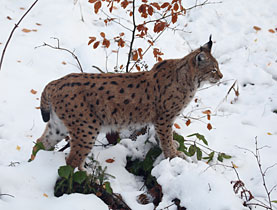
Switzerland boasts growing numbers of predatory animals but needs more money and cooperation among cantons to help these wild populations evolve safely, experts say.
A decentralised cantonal approach to controlling lynx, wolf and bear populations could endanger the long-term development of the animals, WWF Switzerland said on Tuesday.
“We often recognise that Swiss federalism is sometimes difficult because every canton can pretty much decide on its own what to do,” Kurt Eichenberger, project leader for biodiversity, told swissinfo.
“We need a more holistic view, a more national view. This is a problem.”
Although the federal government has issued national guidelines, termed “concepts”, for dealing with the predators, individual cantons can decide whether troublesome animals need to be shot.
So far this year 100 sheep have been killed by wolves, most in the southern canton of Valais. WWF says 40 of the sheep were killed by a female wolf and had not been well enough protected. The farmers lacked either enough guard dogs or shelter for the flocks.
Valais now faces a dilemma of either breaching government guidelines by shooting the wolf and angering public opponents, or enraging farmers if it doesn’t.
The number of wolves in the country went up in the past year from five to nine and the population has spread from two to eight cantons in the past decade.
Switzerland’s 100-strong population of lynx is the biggest in the Alps but as soon as numbers grow in a region, trouble with hunters also go up.
“Pressure from hunters and the autonomy in cantons in their management of the lynx is detrimental to the development of its population,” said Eichenberger.
Cantonal cooperation
The government meanwhile says the system is working, although more funding will be needed to help farmers protect their animals.
“The three concepts are the national programme and I think it is working quite all right. But of course it takes time,” argued Reinhard Schnidrig, in charge of wildlife management at the Federal Environment Office.
“We are not alone. We need the 26 cantons to help us to implement these concepts,” he told swissinfo.
“With the guidelines we hope to bind them to this overall concept of helping the wolf, and the lynx, and the bear come back to the Alps.”
Both the Federal Environment Office and WWF agree funding is needed to increase protection of herded animals, to ease tensions among hunters and farmers.
There is currently a SFr800,000 ($670,000) national budget for this purpose. Schnidrig explains that while the funds can cope with existing numbers of predators, an increase would require more money for farmers in the form of subsidies, which in turn would have to come from the Federal Agricultural Office.
Funds
Talks are now taking place between the two government departments for funds to cover “changed conditions” for farmers, for whom the threat of predators can mean longer hours and the need for better infrastructure.
“The more cantons that are considered to be wolf cantons, the easier these discussions get,” Schnidrig said.
Eichenberger added: “If we want to have predators, if we want to respect the law we have, we should have more money to do it seriously. We have more and more predators so we need more money to have broader, more dispersed herd protection.”
But for WWF it goes hand-in-hand with cantons sticking to national guidelines and improving cooperation.
“They have to work together with all stakeholders. It’s important that cantons realise their responsibilities for predators. You have to take a more international view of them,” Eichenberger urged.
“I would also advise them to anticipate when wolves or bears are coming back. It would be wise to prepare for these situations. When the cantons do act very early, they can prevent conflicts.”
swissinfo, Jessica Dacey
Wolves gained “strictly protected” status in Europe under an international agreement after being driven to extinction in the 19th century, largely by hunting and the expansion of human settlements. They started to return to Switzerland about ten years ago from neighbouring Italy and have begun colonising again.
The government’s “Swiss Wolf Project” was drawn up in 2001, with revisions later added permitting the shooting of any wolf believed to have killed at least 35 sheep over a four-month period, or 25 in a single month.
DNA analysis by Lausanne University confirmed the presence of a new wolf in canton Graubünden on Wednesday. It is the third wolf found to be living in the canton and brings the total number of known wolves in Switzerland to nine. A hunter picked up its tracks in November, and so far it has stayed away from herded animals.
The lynx is Switzerland’s largest native wildcat and was reintroduced into the country in 1971. It is mainly found in the northern Alps and the Jura region.
The Federal Law on Hunting has afforded the lynx protection since 1962. Since the 1970s, animals from the Carpathian Mountains of Slovakia have been re-introduced into the western Alps and the Jura.
The Federal Environment Agency’s “Swiss Lynx Concept” aims to reintroduce the lynx region by region and join up all the isolated populations living along the alpine chain.
The Federal Environment Agency’s “Swiss Lynx Concept” aims to reintroduce the lynx region by region and join up all the isolated populations living along the alpine chain.
Bears, along with wolves and lynx, were hunted to extinction in the Alps in the 19th century.
Bears have begun to return to Switzerland in the past few years. The most recent, “JJ3”, was killed in April in canton Graubünden because local authorities decided it presented too great a risk to humans. The bear had taken to foraging for food in inhabited areas.
In anticipation of more bears straying into the country, the Federal Environment Office has a strategy document – the “Swiss Bear Concept” – setting out guidelines for the management of bears on Swiss territory.

In compliance with the JTI standards
More: SWI swissinfo.ch certified by the Journalism Trust Initiative

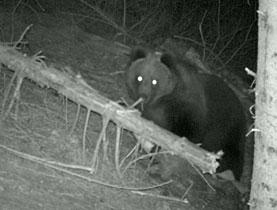
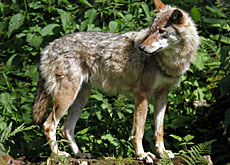
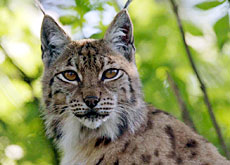
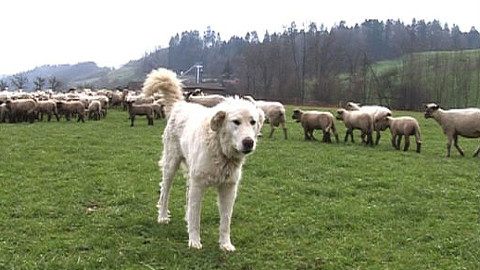
You can find an overview of ongoing debates with our journalists here. Please join us!
If you want to start a conversation about a topic raised in this article or want to report factual errors, email us at english@swissinfo.ch.